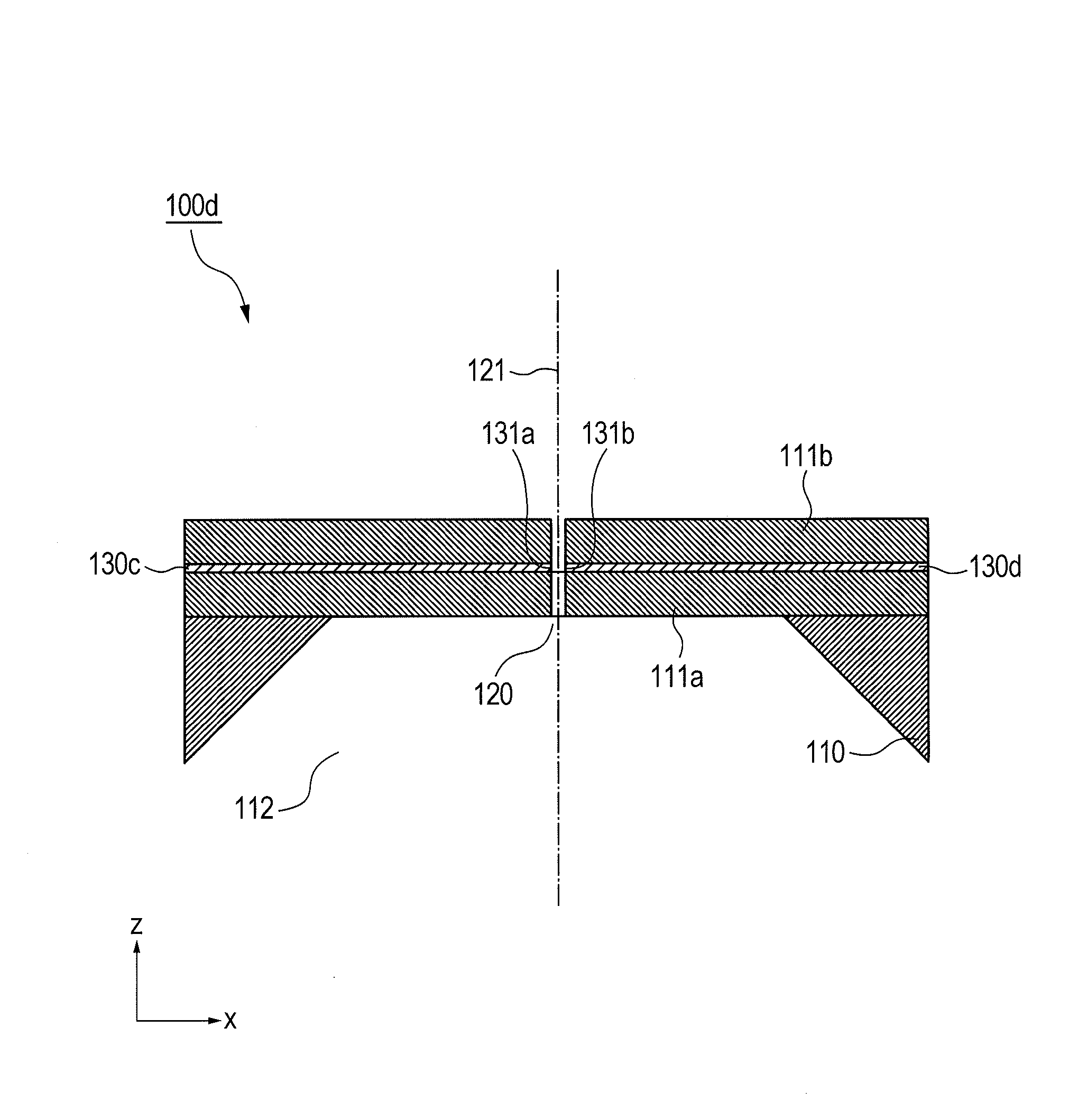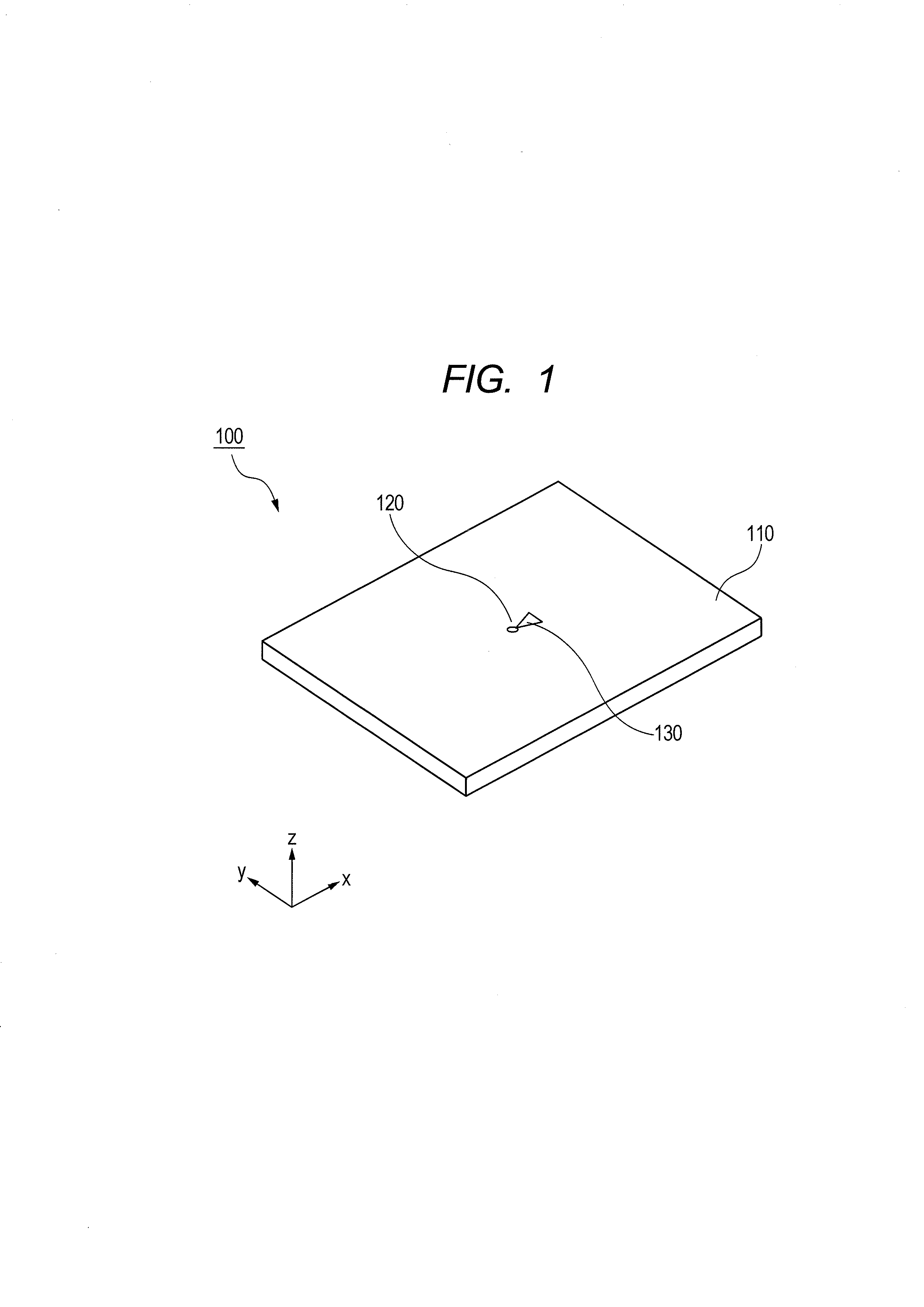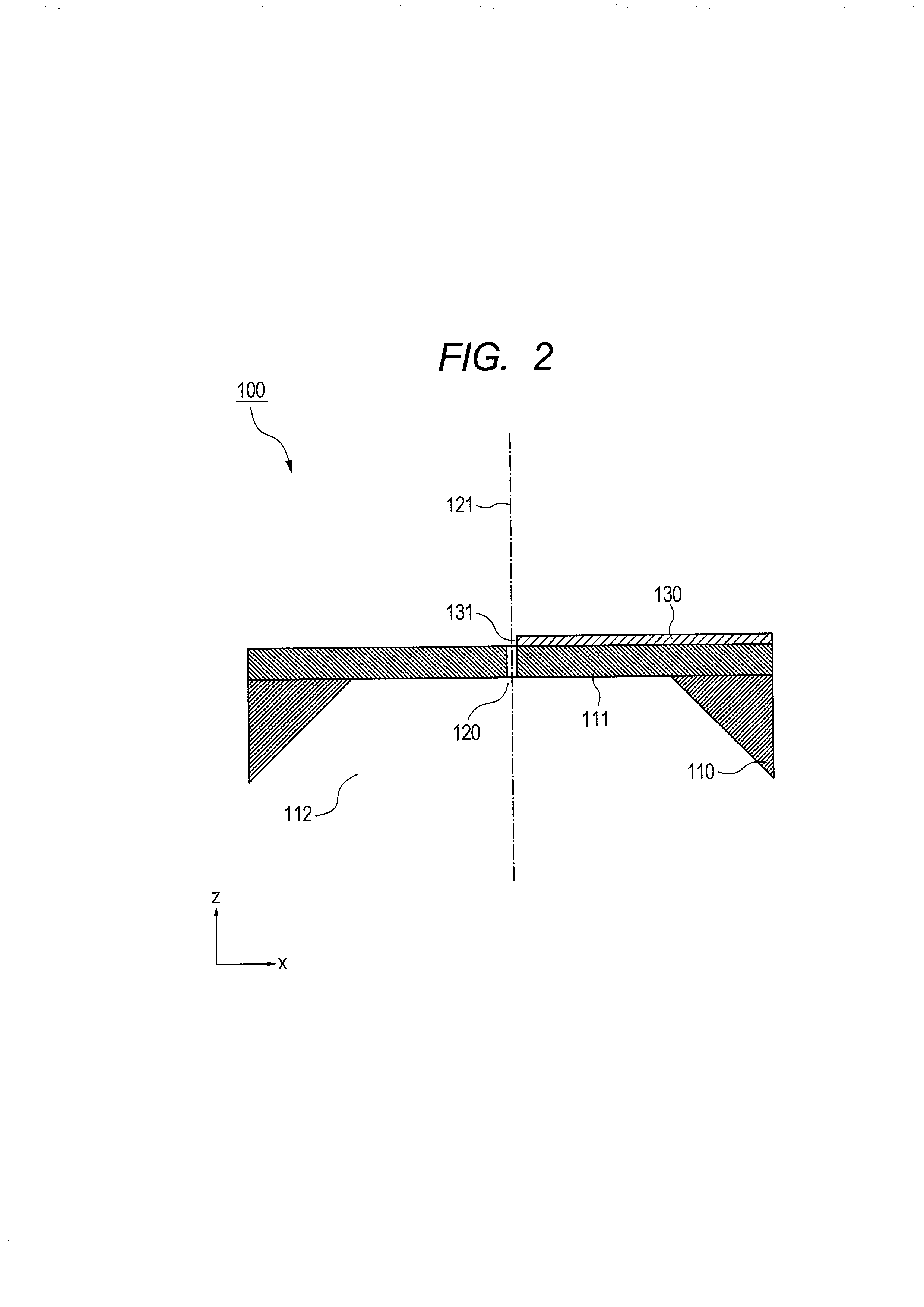Biopolymer Optical Analysis Device and Method
a biopolymer and optical analysis technology, applied in the direction of optical radiation measurement, instruments, spectrometry/spectrophotometry/monochromators, etc., can solve the problems of mechanical instability, reduce the effective cross-sectional area, reduce the ionic current, etc., to achieve high constructive stability and reliability, and improve the ability to identify bases. , the effect of high ability to identify bases
- Summary
- Abstract
- Description
- Claims
- Application Information
AI Technical Summary
Benefits of technology
Problems solved by technology
Method used
Image
Examples
embodiments
[0072]Hereinafter, the present invention will be described in detail. It should be noted that the embodiments described below do not limit the present invention.
first embodiment
Nanopore Chip and Biopolymer Property Analysis Using it
[0073]An example of the construction of a nanopore chip for analyzing the characteristics of a biopolymer of the present invention will be described referring to FIG. 1. FIG. 1 is a schematic diagram of a nanopore chip 100 for analyzing the characteristics of a biopolymer according to this embodiment of the present invention. As shown in the figure, the nanopore chip 100 is composed a substrate 110, a nanopore 120, and an electroconductive thin film 130, or the like. As shown in FIG. 1, a plane parallel to a widest plane (hereinafter, simply referred to as a substrate surface) of the substrate 110 is defined as a x-y plane, a direction, in which an electroconductive thin film 130 and the nanopore 120 are aligned, is defined as a x axis, and a direction perpendicular to the x-y plane is defined as a z axis. The nanopore 120 is formed approximately perpendicularly to the substrate surface; namely, the central axis of the nanopore ...
second embodiment
Multinanopore Analysis Device Construction
[0111]One example of the construction of a multinanopore chip for biopolymer property analysis according to the second embodiment of the present invention will be described referring to FIG. 11. FIG. 11 is a schematic diagram of the multinanopore chip 1100 for biopolymer property analysis according to the second embodiment. As shown in the figure, the nanopore chip 1100 is composed of a substrate 1110, nanopores 1120, 1121, and electroconductive thin films 1130a, 1130b, 1131a, and 1131b, or the like. As shown in the figure, the multinanopore chip 1100 according to this embodiment has a plurality of unit structures composed of nanopores and electroconductive thin films facing to each other, or the like, according to the aforementioned variation, namely the unit structures shown in FIG. 10, on a single substrate 1110.
[0112]Next, one example of the construction of the biopolymer property analysis device according to this embodiment will be desc...
PUM
| Property | Measurement | Unit |
|---|---|---|
| thickness | aaaaa | aaaaa |
| size | aaaaa | aaaaa |
| size | aaaaa | aaaaa |
Abstract
Description
Claims
Application Information
 Login to View More
Login to View More - R&D
- Intellectual Property
- Life Sciences
- Materials
- Tech Scout
- Unparalleled Data Quality
- Higher Quality Content
- 60% Fewer Hallucinations
Browse by: Latest US Patents, China's latest patents, Technical Efficacy Thesaurus, Application Domain, Technology Topic, Popular Technical Reports.
© 2025 PatSnap. All rights reserved.Legal|Privacy policy|Modern Slavery Act Transparency Statement|Sitemap|About US| Contact US: help@patsnap.com



